List of headgear
This is an incomplete list of headgear (that is, anything worn on the head), both modern and historical.

Hats
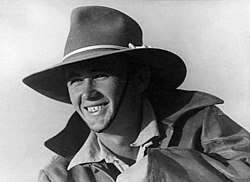
.jpg) Leather flight helmet
Leather flight helmet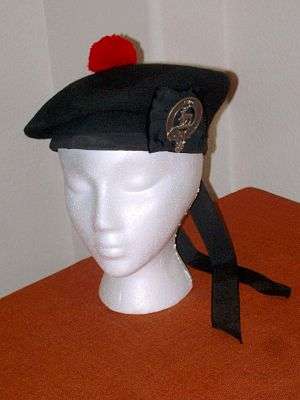
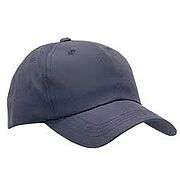

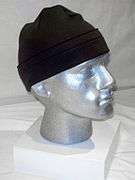 Beanie or skully and or visor beanie.
Beanie or skully and or visor beanie..jpg) Bearskin cap
Bearskin cap
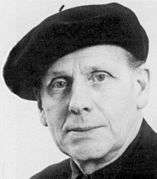
 Boater (also basher, skimmer, cady, katie, somer, or sennit hat)
Boater (also basher, skimmer, cady, katie, somer, or sennit hat)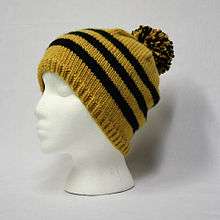 Bobble hat (tuque)
Bobble hat (tuque)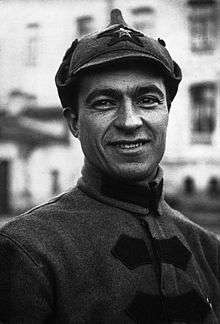
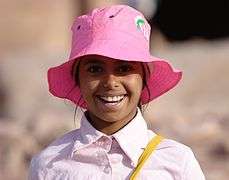 Bucket hat also fishing hat, ratting hat (UK) or Dixie Cup hat (US)
Bucket hat also fishing hat, ratting hat (UK) or Dixie Cup hat (US)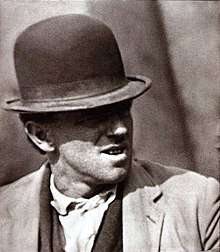 Bowler or Derby
Bowler or Derby Busby, confused with Bearskin [this is not a British hussar 'busby' but a German kolpak
Busby, confused with Bearskin [this is not a British hussar 'busby' but a German kolpak

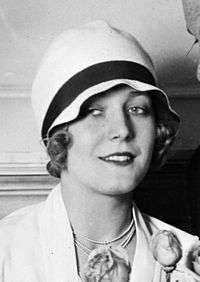

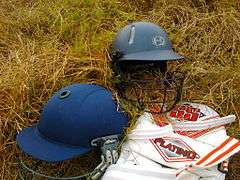
 Combination cap, also "service cap" or peaked cap
Combination cap, also "service cap" or peaked cap.jpg)
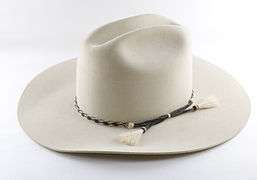 Cowboy hat, sometimes "Ten gallon hat"
Cowboy hat, sometimes "Ten gallon hat"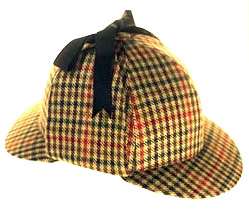
- Eight-point cap, also Gatsby cap, Newsboy cap
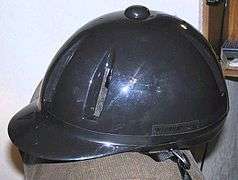
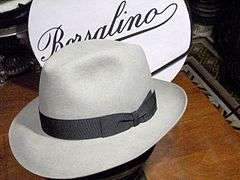
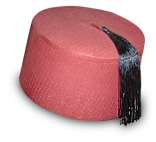 Fez
Fez- Fire hat in the National Museum of American History
 Flat cap, also paddy cap, bunnet, cloth cap, driver cap, golf cap, or Windsor cap
Flat cap, also paddy cap, bunnet, cloth cap, driver cap, golf cap, or Windsor cap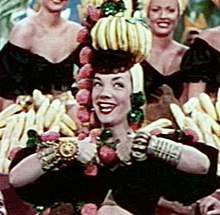
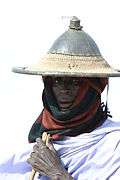
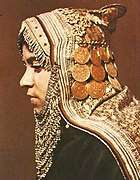
 Garrison cap, also "flight cap", "side cap" or "overseas cap."
Garrison cap, also "flight cap", "side cap" or "overseas cap."
- Greek fisherman's cap, also captain's cap


 knit cap, also knit hat, stocking cap, toboggan, toque, watch or ski cap
knit cap, also knit hat, stocking cap, toboggan, toque, watch or ski cap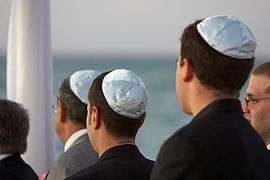 Kippah, also kippa, yarmulke, or skullcap
Kippah, also kippa, yarmulke, or skullcap- Kofia, worn in East Africa
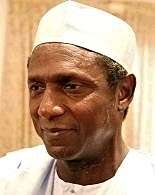 Kufi, including the "Zulu crown".
Kufi, including the "Zulu crown". Nasaq
Nasaq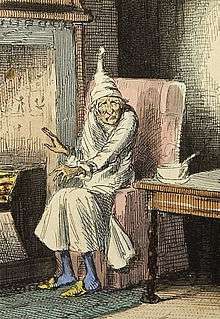
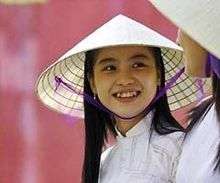 Nón lá
Nón lá Jaapi
Jaapi
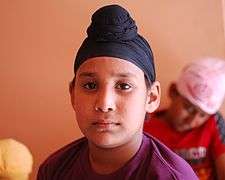
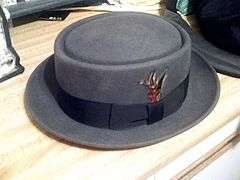

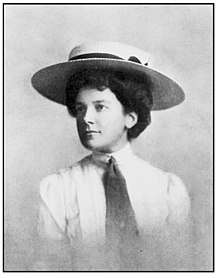
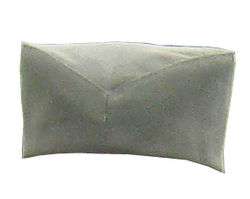
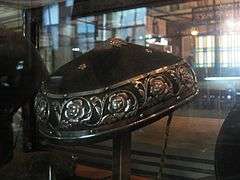
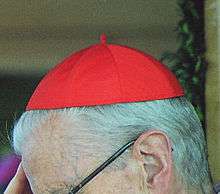 Skullcap, also Zucchetto
Skullcap, also Zucchetto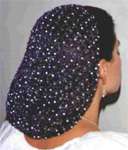
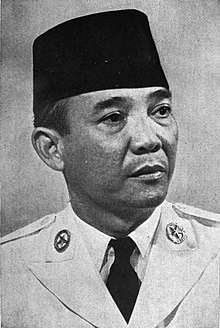
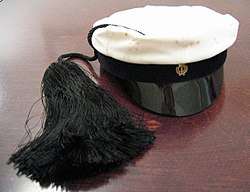
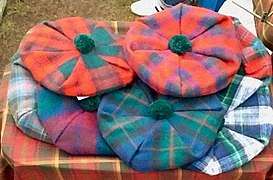 Tam, or Tam o'Shanter
Tam, or Tam o'Shanter Taqiya, also tagiyah
Taqiya, also tagiyah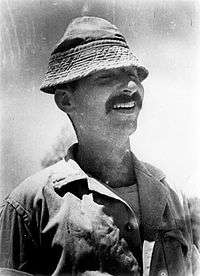 Tembel Hat, or Kova Tembel
Tembel Hat, or Kova Tembel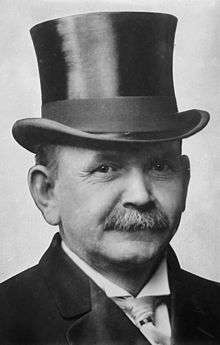 Top hat (also, Topper)
Top hat (also, Topper)
.jpg)
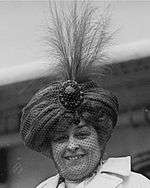
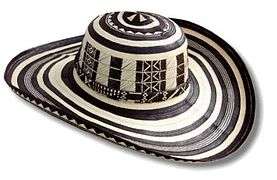
 Umbrella Hat
Umbrella Hat.jpg)
Worn in the past, or rarely worn today
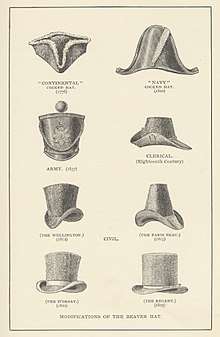
Shapes and styles of beaver hats 1776–1825
Men's
- American fiber helmet - for use in tropical regions; similar to pith helmet
- Anthony Eden hat
- Beaver hat
- Beefeaters' hat
- Bicorne
- Boater, also basher, skimmer
- Boss of the plains
- Bowler, also coke hat, billycock, boxer, bun hat, derby
- Bycocket – a hat with a wide brim that is turned up in the back and pointed in the front
- Cabbage-tree hat – a hat woven from leaves of the cabbage tree
- Capotain (and women) – a tall conical hat, 17th century, usually black – also, copotain, copatain
- Caubeen – Irish hat
- Cavalier hat, also chevaliers – wide-brimmed hat trimmed with ostrich plumes
- Chapeau-bras, also chapeau-de-bras – 18th- to early-19th-century folding bicorne hat carried under one arm
- Chaperon – a series of hats that evolved in 14th- and 15th-century Europe from the medieval hood of the same name
- Cocked hat
- Colback – a fur headpiece of Turkish origin
- Deerstalker – hunting cap with fold-down ears, associated with Sherlock Holmes, Elmer Fudd, Holden Caulfield, and Ignatius Reilly
- Fedora
- Fez
- Hanfu hats and headwear – ancient Chinese hats
- Homburg
- Kolpik
- Litham
- Panama hat
- Papakha
- Pava
- Peci
- Pith helmet – for use in tropical regions; the American fiber helmet is a version of it
- Pork pie hat
- Shovel hat
- Shtreimel
- Sombrero
- Spodik
- Keffiyah or |Sudra
- Papal tiara – a hat traditionally worn by the Pope, which has been abandoned in recent decades, in favor of the mitre
- Top hat, also stovepipe hat, chimney pot hat, lum hat, or (in collapsible form) gibus
- Tricorne
- Trilby, sometimes (incorrectly) called "Fedora"
- Umbrella hat
Women's

Portrait of Georgiana, Duchess of Devonshire wearing a Gainsborough hat, Thomas Gainsborough, Chatsworth House
- Bandeau hat
- Beaver
- Beehive
- Bergère hat
- Bloomer
- Bongrace – a velvet-covered headdress, stiffened with buckram – 16th century
- Breton – originating in 19th-century France, a lightweight hat, usually in straw, with upturned brim all the way round
- Capeline – 18th–19th century
- Capotain (and men) – a tall conical hat, 17th century, usually black – also, copotain, copatain
- Cartwheel hat – low crown, wide stiff brim
- Cocktail hat
- Doll hat – a scaled-down hat, usually worn tilted forward on the head
- Gainsborough hat – a very large hat often elaborately decorated with plumes, flowers, and trinkets
- Half hat – a millinery design that only covers part of the head and may be stiffened fabric or straw
- Hennin
- Kokoshnik
- Nón lá, Vietnam
- Nón quai thao, Vietnam
- Ochipok
- Pamela hat
- Pussyhat - a pink, knitted hat created in large numbers by thousands of participants involved with the United States 2017 Women's March
- Tantour
Unclassified
- Archer's bonnet
- Balibuntal – straw hat from the Philippines
- Castor or caster – beaver or rabbit (see beaver hat)
- Chip hat
- Cloche
- Cockle hat
- Cony or coney
- Coolie hat
- Copintank, also copentank, coptank, copitaine
- Cordies
- Cossack hat
- Demicastor hat
- Directoire
- Dolly Varden
- Fan-tail hat
- Flat
- Garbo hat
- Garibaldi hat
- Gipsy hat
- Golden hat – from Bronze Age Europe
- Gossamer hat
- Grebe hat
- Halo hat – millinery design in which the headgear creates a circular frame for the face, creating a halo effect.[1]
- Hat Terrai Gurkha, worn only by Gurkha Contingent officers in Singapore
- Homburg; a black Homburg was also known as an "Anthony Eden" (after the politician Anthony Eden)
- Hunting hat
- Jaapi of Assam, India
- Jerry
- Kausia
- Kevenhuller
- Kiss-me-quick hat
- Leghorn hat
- Mandarin hat
- Manilla hat
- Marquis hat
- Matinée hat
- Merry Widow hat
- Moab
- Montera
- Mourning hat
- Mousquetaire
- Müller hat
- Mushroom
- Petasos
- Pill box hat
- Quadricorn – a four-cornered hat.[2]
- Sugar loaf
- Veiled hat, also bird cage hat.
Caps
Caps worn by men in the past, or rarely worn today
- Aviator's cap
- Barretina
- Brodrick cap (a military cap named after St John Brodrick, 1st Earl of Midleton)
- Cap and bells ("Jester cap", "jester hat" or "fool's cap")
- Capeline – a steel skullcap worn by archers in the Middle Ages
- Cricket cap
- Dunce cap
- Forage cap
- Hooker-doon, a cloth cap with a peak, in Scotland.[3]
- Icelandic tail-cap
- Jockey's cap
- Kalpak Kazakh hunters on horseback wearing Kalpak (headgear) and holding eagles.
- Loovuuz, Mongolian fur headgear.
- Monmouth cap
- Phrygian cap
- Pileus
- Pillbox cap
- Sailor cap
- Shako
- Smoking cap
- Sou'wester, or "Cape Ann," a flexible waterproof hat traditionally worn by sailors
- Whoopee cap, a style of headwear popular among youths in the mid 20th century in the United States
Caps worn by women in the past
Caps worn on ceremonial occasions
- Black cap
- Cap of Maintenance
Bonnets
Bonnets for women

Old woman in sunbonnet (c. 1930). Photograph by Doris Ulmann
- Cabriolet
- Capote – soft crown, rigid brim, nineteenth century
- Chip bonnet
- Gypsy bonnet – shallow to flat crown, saucer shaped, and worn by tying it on with either a scarf or sash, under the chin, or at the nape of the neck – nineteenth Century
- Kiss-me-quick
- Leghorn bonnet
- Mourning bonnet
- Poke bonnet – Early nineteenth century, "Christmas Carol" style, with a cylindrical crown and broad funnel brim
- Ugly – a kind of retractable visor that could be attached to bonnets for extra protection from the sun, nineteenth century
Bonnets for men
- Balmoral bonnet
- Blue bonnet, the ancestor of the Balmoral, feather, Glengarry and other men's bonnets
- Feather bonnet
- Glengarry bonnet
- Tam o'shanter
Helmets
See Types of helmet
Hoods

Capirote during procession, exist in various colours
- Bashlyk
- Bongrace, the stiffened back of the hood when flipped over the forehead to provide shade; also a separate headdress to provide shade, worn with a hood or coif, Tudor/Elizabethan
- Bonnet head
- Capirote, traditionally worn by the Nazarenos of a Spanish Brotherhood during solemn penitence
- Chaperon (headgear) adaptable late Middle Ages "dead-chicken" hood and hat
- Flemish hood
- French hood
- Gable hood
- Hood – modern or historical, attached to tops or shirts, overcoats, cloaks, etc.
- Mary Queen of Scots
- Medieval hood
- Mourning hood
- Riding hood
- Stuart hood
Headbands, headscarves, wimples

An Iraqi girl wearing a headscarf in downtown Baghdad (April 2005).
- Abaya
- Buknuk
- Chador
- Chaperon (headgear) adaptable late Middle Ages "dead-chicken" hat, hood and scarf
- Coif
- Crispine thirteenth century European women's style of padding hair in a net and headband
- Dupatta, also shayla or milfeh
- Headband
- Headscarf, also khimar, hijab,
- Khimar
- Mandily (Greek Orthodox)
- Nemes
- Snood
- Veil
- Wimple
Masks, veils and headgear that covers the face
.jpg)
Victor Oladipo wearing some protective headgear
- See Mask for a fuller list of masks.
- Balaclava (helmet) or ski mask
- Battoulah
- Bongrace – a shade for the face, sometimes part of a hood, or a separate garment worn with a hood or coif; Tudor/Elizabethan
- Boushiya
- Burqa, also burka, burga, burqua
- Diving mask
- Full-face diving mask
- Gas mask
- Orthodontic Facemask
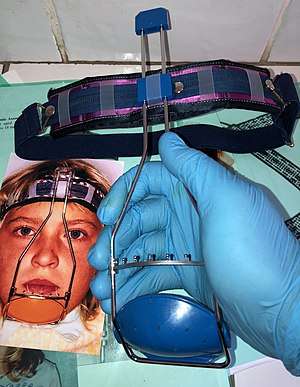
Orthodontic facemask being prepared for fitting to this adolescent female patient - 16 hours daily wear
Other headdress
Women's
- Alice band
- Bandanna
- Bandeau
- Fascinator
- Mitre, also miter
- Perak
- Visor
- Wreath
Jeweled
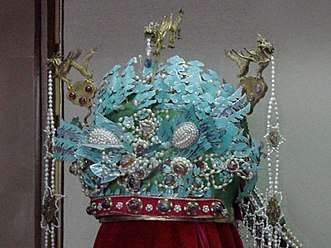
Ming Dynasty queen's headdress with cloisonné, pearls, gems, and gold
Wigs
- Toupee
- Wig
Headgear organised by function
Religious
Buddhist
- Gasa
- Pan Zva (Hat with the long ears from the Pandita of Nyingma.)
Christian
Hindu
_(8411728143).jpg)
- Mukut – Crown worn by Hindu deities
- Pagri – Indian Hindu turban
- Pheta – Marathi turban
- Rasam Pagri – religious ceremony of the turban
- Sarpech – ornament worn with turban
Jewish
- Havalim (חֲבָליִם) ropes that are referenced in Kings I 20:31. Used as a sign of mourning.
- Kashket
- Kippah or yarmulke
- Kolpik
- Migba'at was likely a cone-shaped Turban. This turban was likely only worn in the context of the priesthood and is cited in Exodus 27:20–30.
- Mitznefet was most likely a classic circular turban. This is derived from the fact that Hebrew word Mitznefet comes from the root "to wrap." This turban was likely only worn in the context of the priesthood and is cited in Exodus 27:20–30.
- Pe’er mentioned in Ezekiel 24: 17;23. In verse 17, Ezekiel commands the Israelites to “wrap their” Pe’ers around their heads. In verse 23, Ezekiel tells the Israelite that their Pe’er's "shall remain on your heads.” ("Pe'er" (which translates into "splendor") is usually used to refer to phylacteries (tefillin))
- Sheitel is a wig worn by some married women in order to maintain marital modesty in public
- Shtreimel
- Spodik
- Gargush
- Sudra (סודרא) is a headdress, similar to the keffiyah worn by Jewish men in the ancient near-east.
Sikh
- Sikh turban
Military and police
- Barretina
- Bearskin
- Beefeaters' hat
- Beret
- Bersagliere
- Bicorne
- Boonie hat
- Busby
- Campaign hat, also drill instructor hat, drill sergeant hat, ranger hat, sergeant hat, Smokey Bear hat
- Cap comforter, a woollen hat associated with British Commandos
- Caubeen
- Chapeau-bras, also chapeau de bras – 18th to early-19th-century folding bicorne hat carried under one arm
- Combination cap, also service cap, combination cover, peaked cap
- Custodian helmet, headwear of the British police officer, ranks of Sergeant and Constable
- Envelope Busby or Astrakhan, worn by Officer Cadets of the Royal Military College of Canada
- Feather bonnet
- Flying helmet – closely fitting solid helmet designed to resist impacts within the cockpit of military aircraft – colloquially known as a 'bone dome'
- Garrison cap, also campaign cap, wedge cap, flight cap, garrison hat, overseas cap
- Glengarry, also Glengarry bonnet, Glengarry cap
- Hardee hat
- Helmet
- Jeep cap
- Kartus – a peakless cap worn by the Swedish army during the Great Northern War. Called the Kabuds by the Danish and Norwegians and the Kartooze by the Russians, nations which also adopted it
- Kepi
- Mirliton – a high tubular concave hat with a "wing", worn by hussars in the 18th and early 19th centuries
- Mitre
- Patrol cap
- Pickelhaube – a spiked German leather helmet.
- Sailor cap, also known as "white hat" or "dixie cup" in the US Navy
- Shako
- Shaguma - Yak-hair headdress used by early Imperial Japanese Army generals
- Slouch hat – One side of hat droops down as opposed to the other which is pinned against the side of the crown
- Tarleton helmet – A leather helmet with a large crest. Popular with cavalry and light infantry in the late 18th and early 19th century. Named after British military commander, Banastre Tarleton.
- Tricorn – Three-cornered hat synonymous with the 18th century. Worn by musketeers, dragoons and cuirassiers of all western armies, also often by French grenadiers (which was uncommon considering that most grenadiers at the time wore mitres or bearskins).
- War bonnet, the feathered headdress worn warriors and chiefs of Plains Indians.
Officials and civil workers
China (historical)
- Qing official headwear
- Ming official headwear
- Song official headwear
- Tang official headwear
Other specialist headgear
- Casquette or Cycling Cap
- Chef's hat, also toque blanche, or more familiarly, toque
- Coronet
- Cowboy hat
- Crown
- Cucupha
- Energy dome
- Firefighter's helmet
- Gas mask
- Green eyeshade
- Headlamp
- Night cap
- Nurse's cap
- Orthodontic headgear
- Party hat
- Printer's hat also pressman's hat
- Propeller hat (propeller beanie)
- Santa's hat
- Scrum cap
- Shower cap, a flexible plastic covering to protect the hair from getting wet, as used when taking a shower.
- Space helmet
- Square academic cap
- Stormy Kromer cap
- Swimming cap, also "swim cap" and "bathing cap"
- Tin Foil hat
- Topor – Bengali men's wedding headgear
- Visor
- Watermelon Helmet
- Wedding veil
National dress; association with a country, people and religion
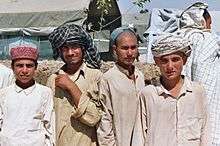
Afghan boys wearing traditional headgear. Kunduz, Afghanistan (June 2003).

Ti'i langga, a Rote islander attempt to copy the 16th-century European headgear.
- Aso Oke Hat – Yoruba people
- Barretina – Catalan
- Bearskin hat
- Beret – French, Basque
- Bhatgaunle Topi – Nepal
- Blangkon – Javanese and Sundanese people
- Breton, also Bretonne
- Chupalla – Chilean
- Chullo – Peruvian
- Clop – Romanian
- Coolie hat
- Coonskin hat – American frontiersman
- Cork hat – Australia
- Cossack hat
- Dogon hat – Dogon people, West Africa
- Fez
- Feathered headdress – Native American
- Flat cap – English people and Irish people
- Four Winds hat – Sami people
- Fulani hat – Fula people, West Africa
- Glengarry bonnet
- Għonnella or Faldetta – Maltese
- Haida hat
- Irish walking hat – Irish people
- Kofia – Swahili people, East Africa
- Kufi – West Africa
- Leopard cap – Igbo people, West Africa
- Mandarin hat – Chinese
- Mokorotlo – Basotho/Lesotho
- Montenegrin cap – Montenegrins, Serbs
- Lungee (Afghan Turban) - Pashtun people, Afghanistan
- Pakol – Pashtun people, Afghanistan
- Phrygian cap – Roman, French
- Qeleshe – Albanian
- Šajkača – Serbian
- Salakot – Filipino
- Shripech – Traditional Crown of Monarch of Nepal
- Slouch hat, also digger hat, Australia and New Zealand
- Songkok – Malay-speaking peoples of Indonesia, Malaysia, Brunei and Singapore
- Tam o'shanter – Scottish
- Ti'i langga – Rote Island
- Top hat – English
- Topor – Bengali men's wedding headgear
- Turban
- Tuque or toque – Canadian, esp. French-Canadian/Québécois
- Upe - Bougainville
- Ushanka – Russian
- Welsh hat
- Witch hat - Galician
- Zulu crown – Zulu people, Southern Africa, see kufi for information
See also
- List of hat styles
- Pointy hat
- The Philippi Collection
- Jaapi
- Asian conical hat
References
| Wikimedia Commons has media related to Headgear. |
- Chico, Beverly (2013). Hats and Headwear around the World: A Cultural Encyclopedia. Santa Barbara, California: ABC-CLIO LLC. pp. 211–12. ISBN 9781610690621. Retrieved 13 November 2014.
- Lewandowski, Elizabeth J. (2011). The complete costume dictionary. Lanham, Md.: Scarecrow Press, Inc. p. 243. ISBN 9780810840041.
- The Concise Scots Dictionary. Aberdeen University Press. 1987. p. 296. ISBN 0-08-028492-2.
This article is issued from Wikipedia. The text is licensed under Creative Commons - Attribution - Sharealike. Additional terms may apply for the media files.
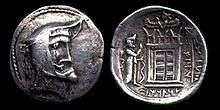
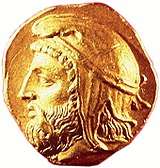
.jpg)